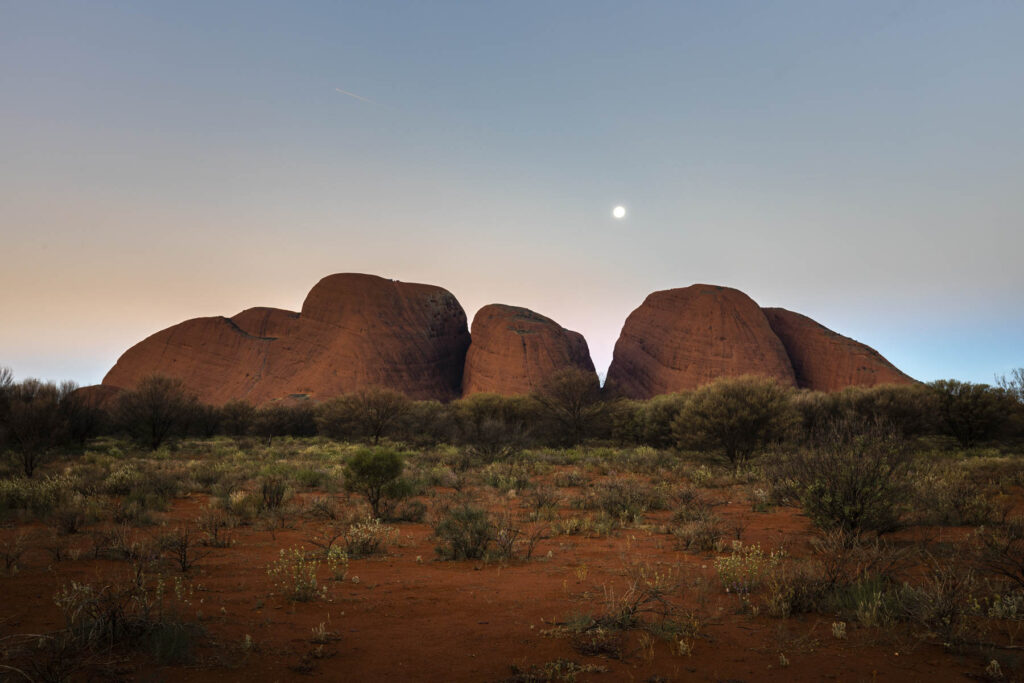Australia
Taking in the beauty of Uluru
It’s an image we have seen countless times – the iconic image of the rock rising up out of the flat barren landscape. And yet in reality Uluru is so much more beautiful.
Driving into the carpark the rock rises up, first beside and then in front of you and while I expected it to be rather long but relatively narrow, it has a far more interesting footprint than that.
On our drive into Yulara from Curtain Springs, where we’d had a quick overnight stop, I tried to fool Adrian’s parents by pointing out Mt Connor to them over the CB.
“That’s not Uluru,” replied his dad, thinking I had been fooled. The joke had completely backfired.
But it’s true, at first site Mt Connor, or Foolaroo as it’s often called, looks a lot like Uluru.
At the famous rock we walked around the base, did a ranger-guided walk and watched the sunset and sunrise. What struck me was the different textures in the rock, here smooth like silk, there gnarly and knotted.
In sections, if you look closely, the rock appears to be etched with relief paintings and you can almost make out little scenes on the side. On the Mala walk our ranger guide asked if anyone had been here previously. Ade’s dad had, sixty years ago back when you could climb it. He pointed out where he went up – a vertical incline that would challenge even the regular walkers amongst us.
But what he was most surprised about, he said, way back when he went up to the top, were the watering holes up there and the fish.
We all looked at our guide – fish? Surely not.
The guide grinned nodding his head. They’re not actually fish, he said, but fish like. They hibernate up there and then move into the watering holes when the rains come and fill them with water once more.
The guide pointed out the sacred sections of the rock and explained how Aboriginal people had used the areas.
It was a short, free walk arranged by the rangers but well worth it to get a better understanding of the Aboriginal history at the site.
Walking around the base we marvelled over the rock art, those nooks and crannies and the sheer size of the rock. At times we were incredibly close and could feel the smooth cold texture beneath our fingertips, at other times the path weaved away from the rock giving us a chance to stop and look at the overall mass.
We wandered through masses of flowers, flooding the base, and stopped at the water springs that in winter will see water cascading down the sides of the rock, but for now are simply blackened sections of the rock along which the water flows.
In the very informative information centre we learned about the different animals that call this area home and were shocked to discover the number of bees, wasps and other insects that live here. The woman behind the counter told us to watch out for the smaller wasps.
“The smaller they are, the worse they are,” she said and told us about the time she got up in the night to make herself a sandwich, bit into the bread and got stung by a tiny wasp inside her mouth.
She said the pain was excruciating.
As if there isn’t already enough to worry about in Australia’s family of wildlife, now we have to add bees to that list too. (I’m already incredibly freaked out by bees and wasps, so in truth, they’re already well and truly on my watch and avoid list.)
We returned to the rock at sunset and sunrise so Ade could photograph it in different lights. It was worth it. The dropping and rising light changes the colour of the rock face and the ever-changing colour in the sky behind it creates stunning contrasts.
Out at Kata Tjuta we did the Kala Walk and the Gorge walk and watched the sun set.
It, Kata Tjuta, was equally, if not more impressive than Uluru. Both are fascinating, the way they rise up out of the flat landscape. It was a lot greener than I expected it to be with beautiful flowers forming a skirt around the base of the rock.
Despite being there for four nights we didn’t have a lot of time to rest.
Uluru is in the middle of nowhere, so you’d be forgiven for thinking that once you’ve seen the giant rock, there is not much else to do.
But you’d be wrong. Very wrong.
Ade learned to play the Didgeroo, there are camel rides, shops to explore, different walks and tours at the rock and activities at Yalara, the nearby town with the closest accommodation to Uluru. And then, of course, there’s Kata Tjuta.
From Yalara you can climb a small mountain to watch the sunrise and set over Uluru and there are cafes and restaurants as well as swimming pools.
We came back to the camp ground after doing the Mala walk to find our awning walls flapping away in the wind, the table overturned and the privacy tent missing – luckily some kind passerby had folded it up and put it behind our van. The wind was so strong we had to secure the privacy tent using the pole from our awning.
And so, as we did in the Flinders Ranges, at Uluru we learned to live with adverse weather conditions and Australia’s extremes.
Read more about our adventures in Australia here.
Fast Facts
We stayed at Yalara caravan park
We stayed for four nights.
Highlights: Every step!
Read before you go: Songlines by Bruce Chatwin or Welcome to Country by Marcia Langton.
Join @AllabroadAU on Instagram, FaceBook, X and YouTube for more travel inspiration




